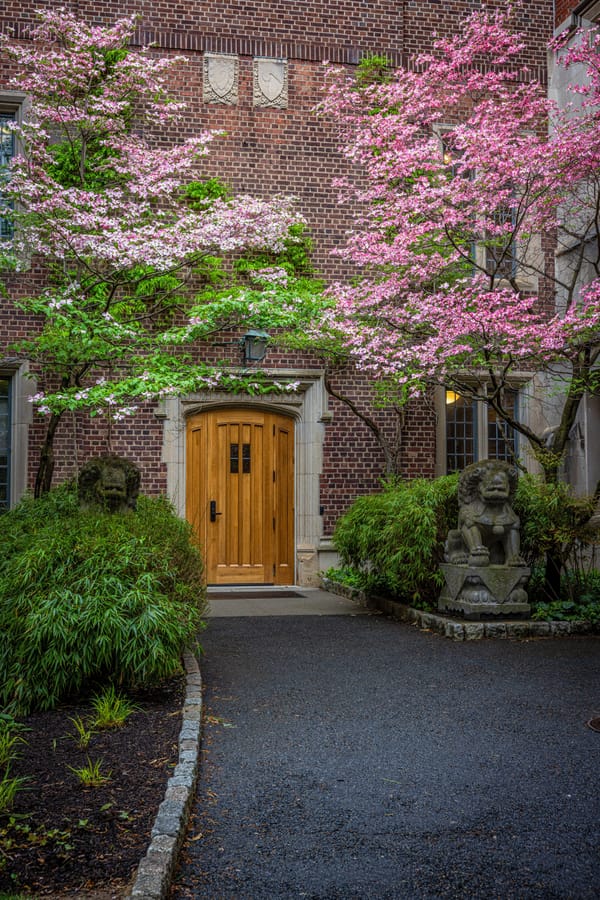Are you also Closed Captioning?
I highly recommend to get a good quality sound bar. Make sure your sound bar has atleast 3 channels, so that the center (dedicated) channel will give you the dialogue and the remaining background sounds are channled through the other speakers.
I have been truning on closed captioning for a few years now as me and my wife at times miss a few words as English (let alone the American accent) is not our first language. Also, thanks to the rise of Netflix we have been watching content in other language and closed captioning is a savior hre.
However, lately I have noticed, my son who is 10 years old has been turning on closed captioning too. Alarm bells went off and we had him tested, but his heaering results came back normal. Later, I noticed when his friends were home for a movie night insisted on turning on closed captioning.
Now, I was noticing where ever I went, and it was satisfying to see most households have closed captioning turned on.
I had to find out what was going on behind the muddled audio and if its us or the TVs sound quality is getting worse.
What I was able to find out was that the issue is that we all have been having a hard time hearing what the actors are saying on screen. My first reaction was maybe the sound settings aren't correct. But changing that didnt not make a difference. The other obvious solution was to turn up the volume, but with that it was just chaos. Also, my Apple Watch woudl start sending me loud noise warning notificaitons.
It was now time to look at the speakers.
If you notice, over time the TVs have gotten slimmer and thus the speakers are typically behind the TV or below the TV. I have two TVs at home. An LG LCD which is about an inch thick and have its speakers blasting behind straing into the wall. So all the output goes straing into the wall and thats where we loose half of our audio.
The other is an LG OLED which is about a few centimeters thin. Its literally a piece of glass and to support this heavy piece of glass, the bottom stand is heavy and about ~2 inches thick. Here the speakers are facing upwards. And I noticed that the sound quality on this is so much better. The audio output travels up and does not get absorbed almost immediately as it comes out.
Also, this is not the only reason for muddled sound. There are several factors like sound produciton and how the deviec is compressing the sound. I spoke to a friend to understand how sound mixing works as he has some experience in this field.
Today sound mixing is at another level - in lay man terms, just like how our iPhones have advanced since it launched in 2007, something similar has happened in the sound mixing area as well. Sound mixers typically combine everyting that you hear in a movie or TV show like dialogue, music, events, gun shots, explosions, dog barking almost everything. Their ultimate goal is to combine all of these sounds and make it feel as real as possible. So the more channels you have the more high quality output you get, which then has to get compressed, so that it can play on sets with a mono speaker or dual speker or a fancy 5.1 speaker system.
Most of our TVs come with a mono or a dual speaker system. Imagine that high quality output coming out of these speakers which are either facing down straight on to your table or behind into the wall. The muddeled sound is also becuase of all the sound overlap that your mono or dual speaker has output and that makes it harder to hear.
Most TVs come with different sound output for Movies, Sports, etc. Using those do help but it only tries to remove some background and hopes that it can amplify the right dialogue channel.
The director or sound production for a movie or TV show is not going to scale this down, becuse today a lot of emphasis is put on sound effects - well there is an oscar to be won in this category. They want the sound to be as real in life as possible.
There are some things you can do differently to solve this problem. If you have a TV that has speakers behind, then haning it up on the wall is going to give you a muffled sound. The cheapest option is to set it up on a table and a bit away from any surface that can absorb sound. So a wooden table isn't going to help. Adding a rug on the floor and some curtains that can absorb sound also helps as that keeps the sound in the space you are in; so yes you want to absobe sound but away from your speakers. Keep space betwen the TV and the furniture. I have about 6-10 feet between my TV and furniture and that made a big difference.
The other solution which I highly recommend to get a good quality sound bar. Make sure your sound bar has atleast 3 channels, so that the center (dedicated) channel will give you the dialogue and the remaining background sounds are channled through the other speakers.
I also have two Homepod minis connected to my other TV which is then connected to my AppleTV. So when I turn it on, I select both the TV and the Homepod as the output. This set up helps as the dialogue now is coming out of the TV speakers and the background noise is now channeled through the HomePods.
Yes turning off the closed captioning after this set up has worked. It has been much more clear to hear what the actors are saying and also not miss out on the background noise - it remains in the background. For once, we have been enjoying watching a show rather than focusing on close captioning trying to figure out what the actors are saying. I'm not going deaf and my Apple Watch hasn't sent me a loud noise warning notification.





